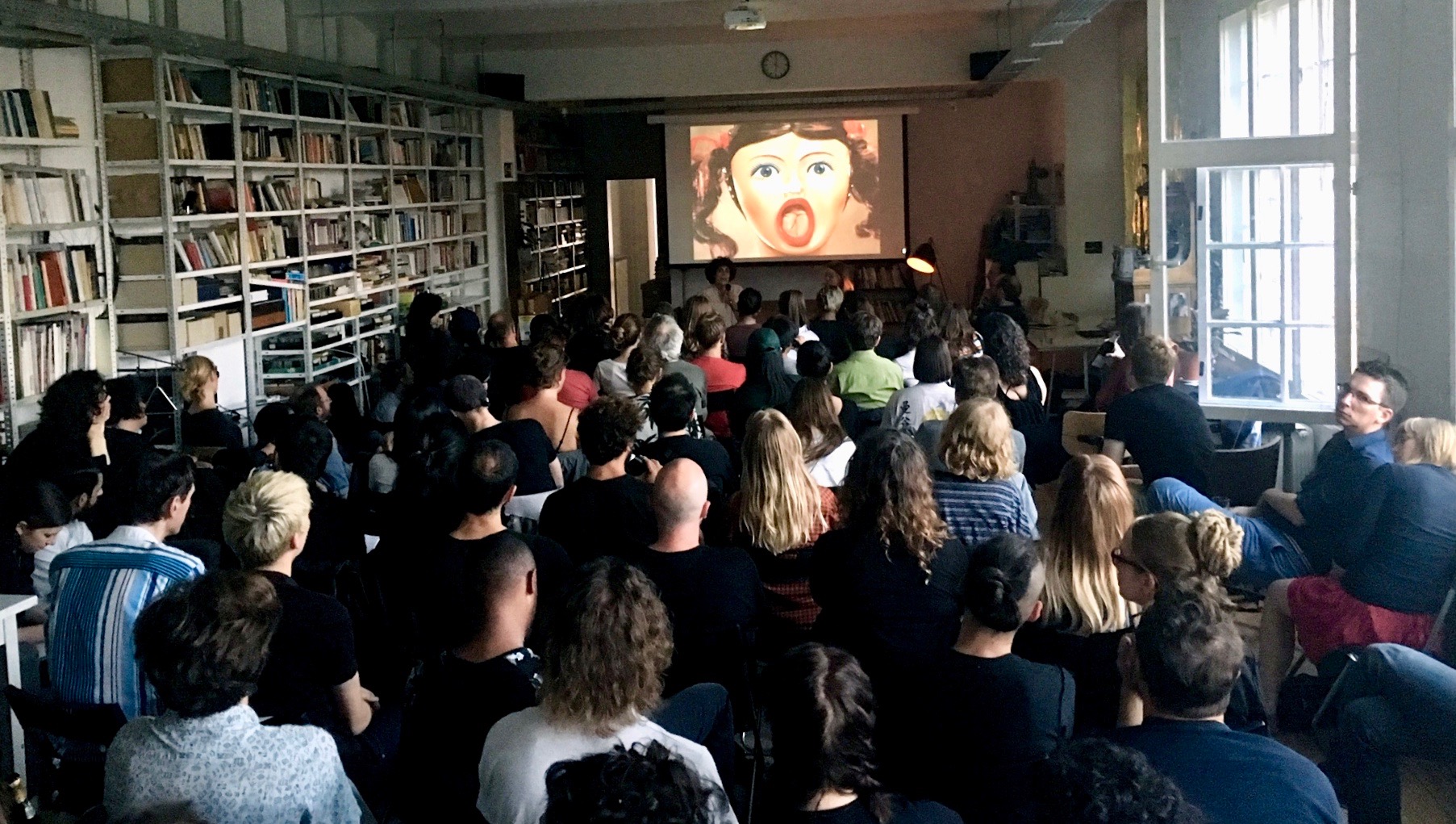Tuesday, 28 August 2018, 7.30 pm, diffrakt | centre for theoretical periphery
Lecture and discussion with
Maria Dada | Hannah Wallenfels
Sex Robots are instrumented sex dolls, with a history that dates back to masterbation puppets invented in the 17th century by dutch sailors. First made out of leather and cloth, the sex robot has evolved to acquire speech and, with the advent of deep learning recurrent neural networks, perhaps a mind. Discussions of sex robots are often accompanied by arguments that they encourage a heteronormative view and the idea that women are slaves to desire.
For Hegel the slave or the bondsman is one of the structures of self-consciousness that is born out of the battle of desires, when one self-consciousness meets and tries to eliminate the other self-consciousness, which stands over and against it. The enslaved self-consciousness becomes the instrument, the tool or the robot of the master. The slave then enslaves another tool, a robot, in order to realise itself as self-consciousness again. The machine, or the AI is that which mediates and alienates self-consciousness from nature, from their own nature, but which allows them to realise their own boundless creativity as self-consciousness once again.
In an epoch when our desires are enslaved by consumer marketing algorithms studying our statistical cybernetic past to nudge us into consuming models in order to fabricate market demand, it is almost as if the cybernetic machine, the tool, has been switched back onto self-consciousness. As if self-consciousness is meeting itself once more only this time it’s in the shape of AI. With this repeated encounter we can begin to ask: What is the role of the sex robot? How can we imagine the sex robot to come? Are we ready to queer these sex machines?
